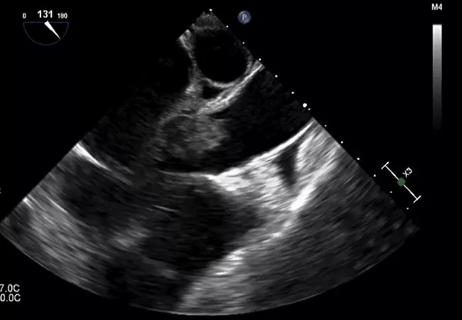Our Director of the Adult Medical Emergency Team discusses her work

As Cleveland Clinic’s first medical director of the Adult Medical Emergency Team (AMET), Faith Factora, MD, has been working with SICU and general anesthesiology staff to make the AMET team an integral part of a system to anticipate patients with life-threatening problems and mitigate crises.
Cleveland Clinic is a non-profit academic medical center. Advertising on our site helps support our mission. We do not endorse non-Cleveland Clinic products or services. Policy
“I feel like AMET has been integrated into every day patient care versus working independently until there is an emergency,” says Dr. Factora, staff in general anesthesiology. “As such, we continue to expand our work to also include a lot of bedside education.”
Consult QD asked Dr. Factora three questions about next steps for AMET and how she finds joy in her work.
Now that you’ve made progress integrating AMET into the overall workflow, what’s next?
As part of a nationwide initiative to decrease the deleterious effects of being in an ICU, I started working with the SICU’s other physicians, nurses and physical therapists. Part of the initiative included increasing family engagement in the care of the SICU patient. We have been successful in increasing family members’ education and involvement in their loved one’s care.
SICU nurses try to call each family every day as an update and if family members are present during rounds, we try to involve them. We have created educational materials on delirium management and increasing strength and exercise in hospitalized patients. We distribute those to family members so that they can be actively involved in helping their loved ones get better.
What do you wish caregivers who don’t work with AMET knew?
I feel that Cleveland Clinic takes care of the sickest patients in the country. We have patients on regular nursing floors that would be in an ICU if they were in any other hospital. With that being said, while we know that the regular nursing floors takes great care of patients, just the littlest insult can tip those patients over to become ICU patients. Most of the clinicians on AMET have an ICU or OR background, so when we get nervous about a patient, it is with good reason.
How do you continue to find joy in your medical career?
For the first year I was on staff, I was the only woman in the SICU group. For every year following, we have hired an average of one female a year. I am lucky to have supportive male colleagues, but working with the women in my group adds a layer of support, empathy and understanding that is invaluable.

OMT may be right for some with Graves’ eye disease

Perserverance may depend on several specifics, including medication type, insurance coverage and medium-term weight loss

Integrate climate-related health information and counseling into your practice

Physicians discuss a specific case example, and PICC pros, cons and alternatives

A snapshot of the 2020 GINA report

A review of available interventions

Abstinence from combustibles, dependence on vaping

An historical view of the disease